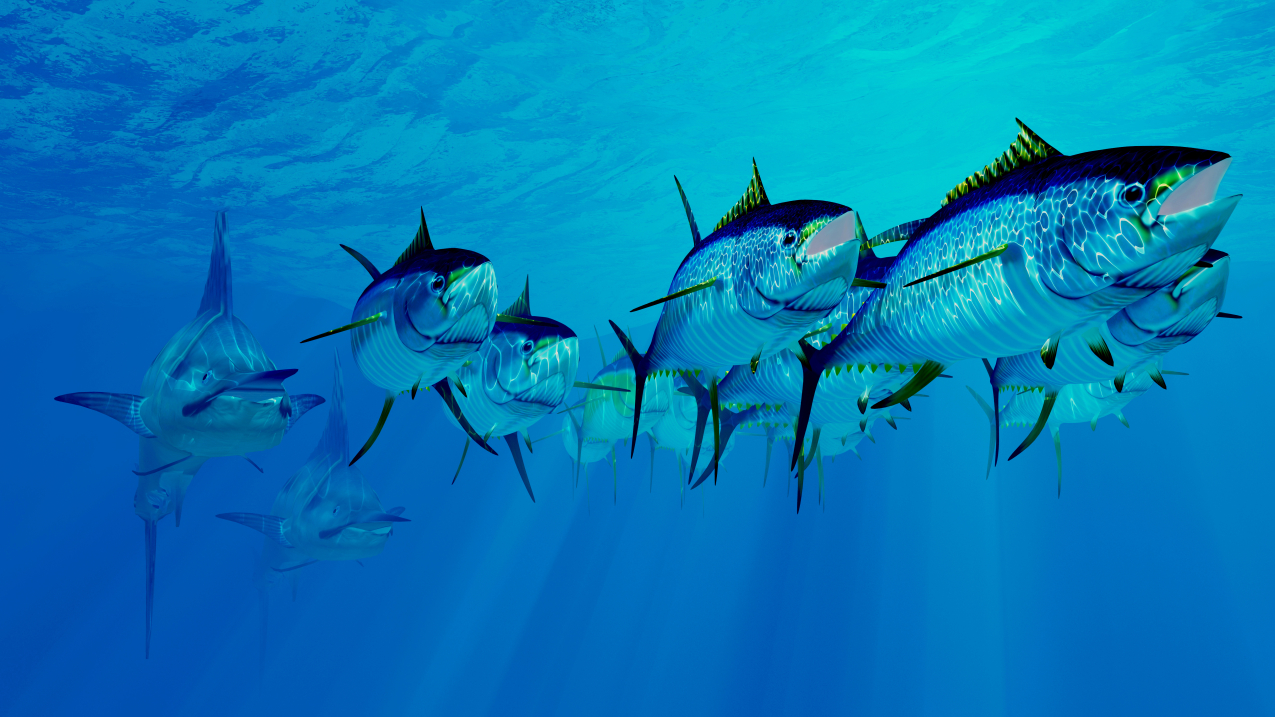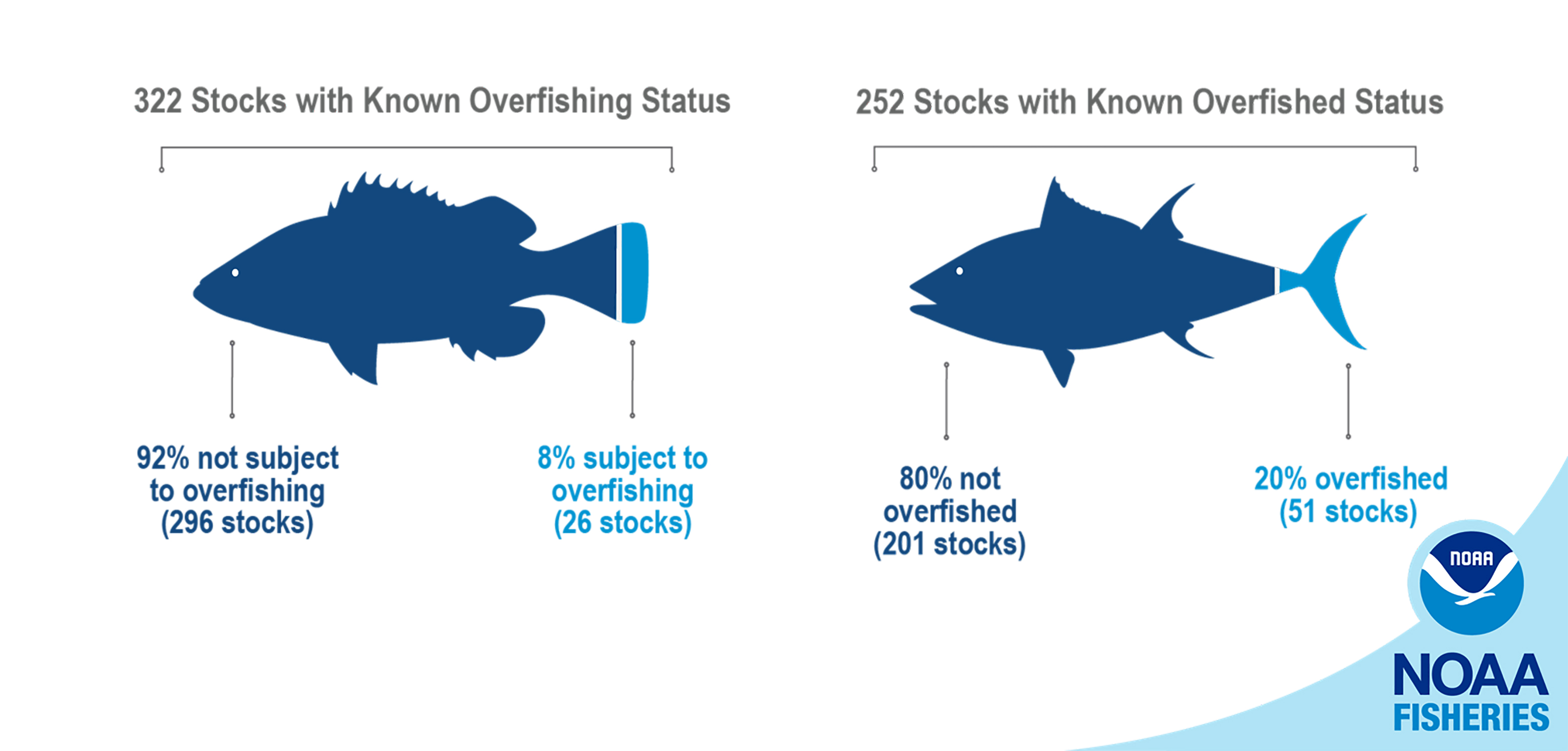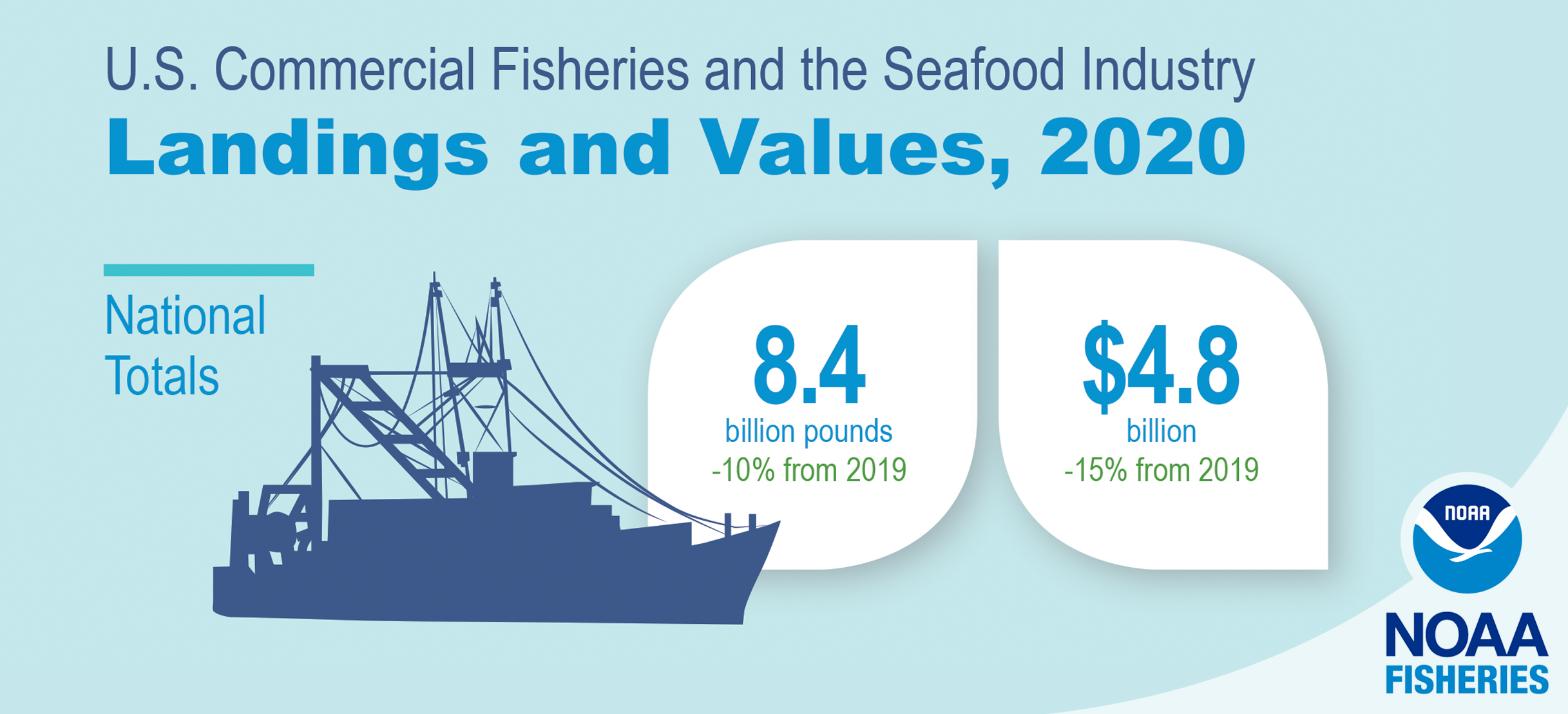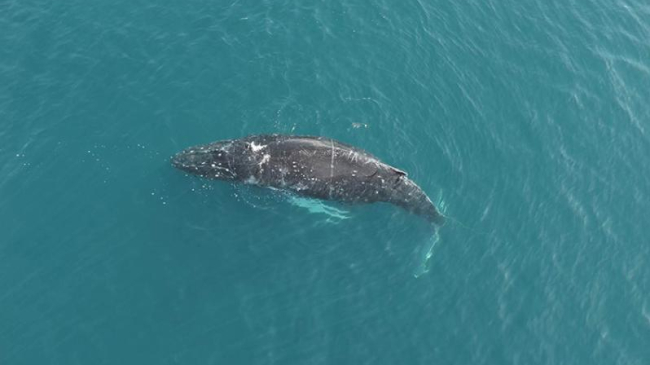New tools and data support fishery management in the face of a changing climate

A digital artwork of a school of yellowfin tuna fish in the Atlantic Ocean used on the cover of the 2021 Status of the Stocks Report released by NOAA. (Image credit: Getty images)
Today, NOAA released the 2021 Status of Stocks report, highlighting the efforts to rebuild and recover U.S. fisheries by providing a snapshot of the more than 460 stocks managed by NOAA Fisheries. In addition, NOAA issued an update to the Fisheries of the United States report, which provides details about the economic impacts of fisheries, and tracks annual seafood consumption and the productivity of top fishing ports.
In 2021, U.S. fisheries held steady with more than 90% of stocks not subject to overfishing, and 80% with population sizes sufficient to be considered not overfished. The number of stocks on the overfishing list held steady at 26, and the number of overfished stocks slightly increased to 51, up from 49. Data also reveals that in 2020, seafood landings in the U.S. were down 10% — likely due to the impacts of the COVID-19 pandemic — and overall seafood consumption had slightly decreased from the previous year, to 19 pounds per person.

A stock is on the overfishing list when the annual catch rate is too high. A stock is on the overfished list when the population size of a stock is too low, whether because of fishing or other causes.
“NOAA’s annual Status of Stocks report shows that the United States continues to be a global leader in sustainable fisheries management, as we work to understand how climate change is affecting fisheries and the communities that this sector supports,” said Dr. Rick Spinrad, NOAA Administrator. “The report demonstrates that we remain on track to maximize marine fishing opportunities while ensuring long-term ecological and economic sustainability in our changing world.”
This year’s report also featured the first-ever assessment of the Atlantic blacktip shark. NOAA Fisheries determined the stock is not subject to overfishing, not overfished and is above the sustainable level. Assessing stocks for the first time significantly contributes to the science-based information used to set appropriate management measures.

“Maintaining sustainable fisheries contributes significantly to the U.S. economy and helps meet the growing challenge of increasing our nation’s seafood supply,” said Janet Coit, NOAA Fisheries Assistant Administrator. “This year, improved methodologies, updated stock assessments and innovative tools and approaches provided new information to inform fisheries management in the face of climate change.”
For the first time, Fisheries of the United States data is now available via a new interactive web portal, which includes a detailed historic record of economic analysis of seafood consumption, landings totals and imports and exports of fishery products in the U.S. This portal will allow for more frequent updates throughout the year to improve data sharing and collaboration.
In April, NOAA Fisheries also shared a new tool to better track the location and movement of marine fish and invertebrate species in U.S. waters, which may be shifting in response to changing ocean conditions. This resource facilitates decision-making about fishery management and science, and increases overall knowledge of species distributions for stock assessments.
Sustainable U.S. fisheries play an important role in the nation’s economy, providing opportunities for commercial, recreational and subsistence fishing, and sustainable seafood for consumers. By ending overfishing and rebuilding stocks, NOAA Fisheries strengthens the value of U.S. fisheries to the economy, communities and marine ecosystems.
Media Contact
Lauren Gaches, nmfs.pa@noaa.gov, (202) 740-8314



